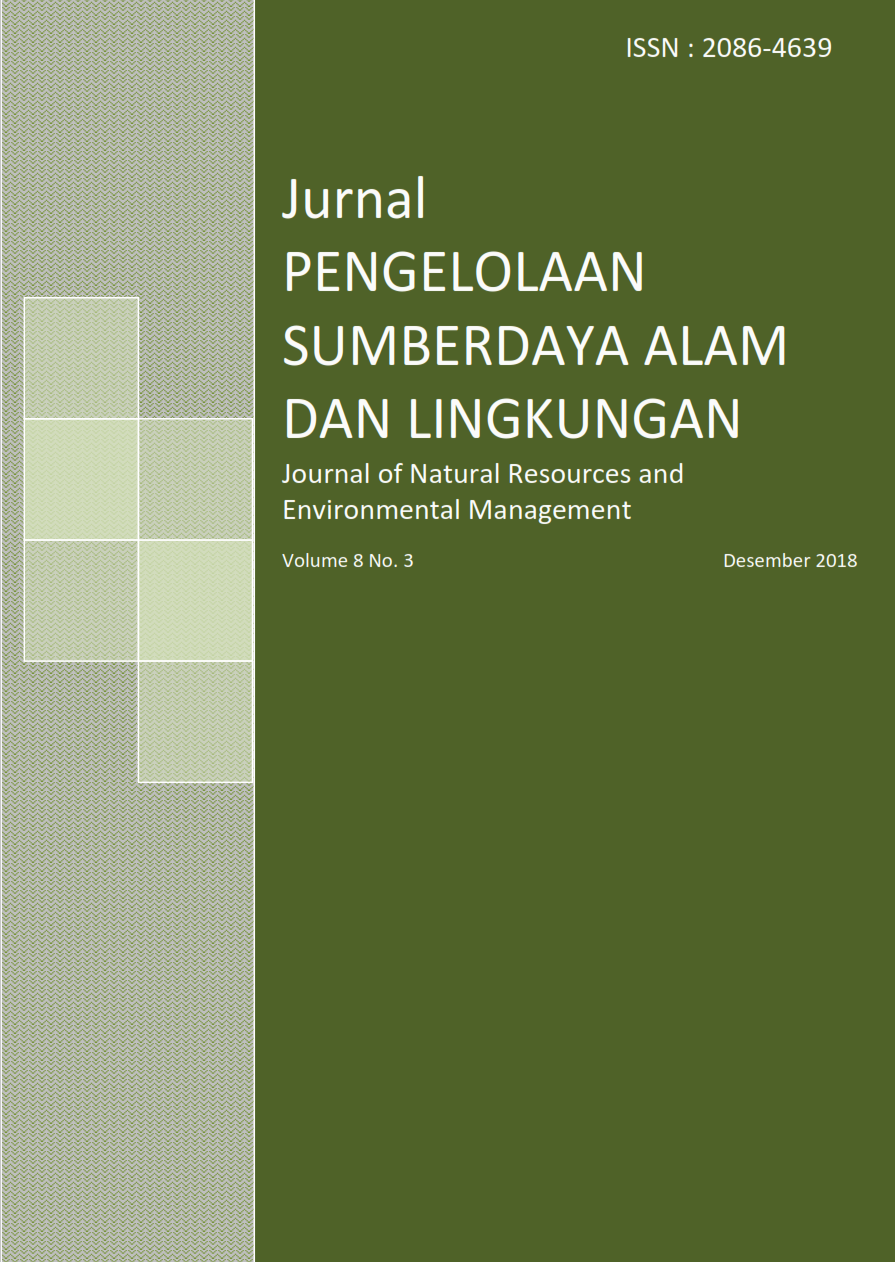Abstract
Land cover is one of factors which is important in watershed management. The changes of land cover in a watershed can affect the hydrology abstraction. Land cover of upstream Citarum watershed is potentially changes. Economy, social, population, and natural hazard are factors that affect the change in land cover. The aim of this research were to analyze spatial change of land cover in upstream Citarum watershed period 2006-2014 and predicting future land cover of 2030 as usual and applying a policy to conserve paddy field and forest. Analysis was carried out applying Cellular automata markov chain of land cover spatial model. The result showed that Kappa and total accuracy for image classification were 0.89 and 0.92. Dominant land cover type in upstream Citarum watershed was paddy field of 25.99 – 26.06%. The average of land cover changes approximately < 1% with conversion of paddy field to built up area is the dominant change. Model validation of 2014 predicted land cover was 0.992, while Kappa for optimum iteration of 7 was 0.994. The land cover for period 2006-2030 was change approximately < 1%. The types of land cover that increase in 2030 were built up area and mixed farming of 0.21% and 0.11%, respectively, while plantation forest, moor, paddy field, and bareland were decreasing approximately 0.17, 0.23, 0.62 and 0.02%. The predicted land cover of 2030 under protection of paddy filed and forest scenario was trigger the increasing of mixed farming 0.36%, while moor and bareland were decrease of 0.22 and 0.10%.
Authors
YusufS. M. (2018) “PERUBAHAN SPASIAL TUTUPAN LAHAN DI DAS CITARUM HULU”, Jurnal Pengelolaan Sumberdaya Alam dan Lingkungan (Journal of Natural Resources and Environmental Management). Bogor, ID, 8(3), pp. 365-375. doi: 10.29244/jpsl.8.3.365-375.
Authors who publish with this journal agree to the following terms:
- Authors retain copyright and grant the journal right of first publication with the work simultaneously licensed under a Creative Commons Attribution License that allows others to share the work with an acknowledgement of the work's authorship and initial publication in this journal.
- Authors are able to enter into separate, additional contractual arrangements for the non-exclusive distribution of the journal's published version of the work (e.g., post it to an institutional repository or publish it in a book), with an acknowledgement of its initial publication in this journal.
- Authors are permitted and encouraged to post their work online (e.g., in institutional repositories or on their website) prior to and during the submission process, as it can lead to productive exchanges, as well as earlier and greater citation of published work (See The Effect of Open Access).






